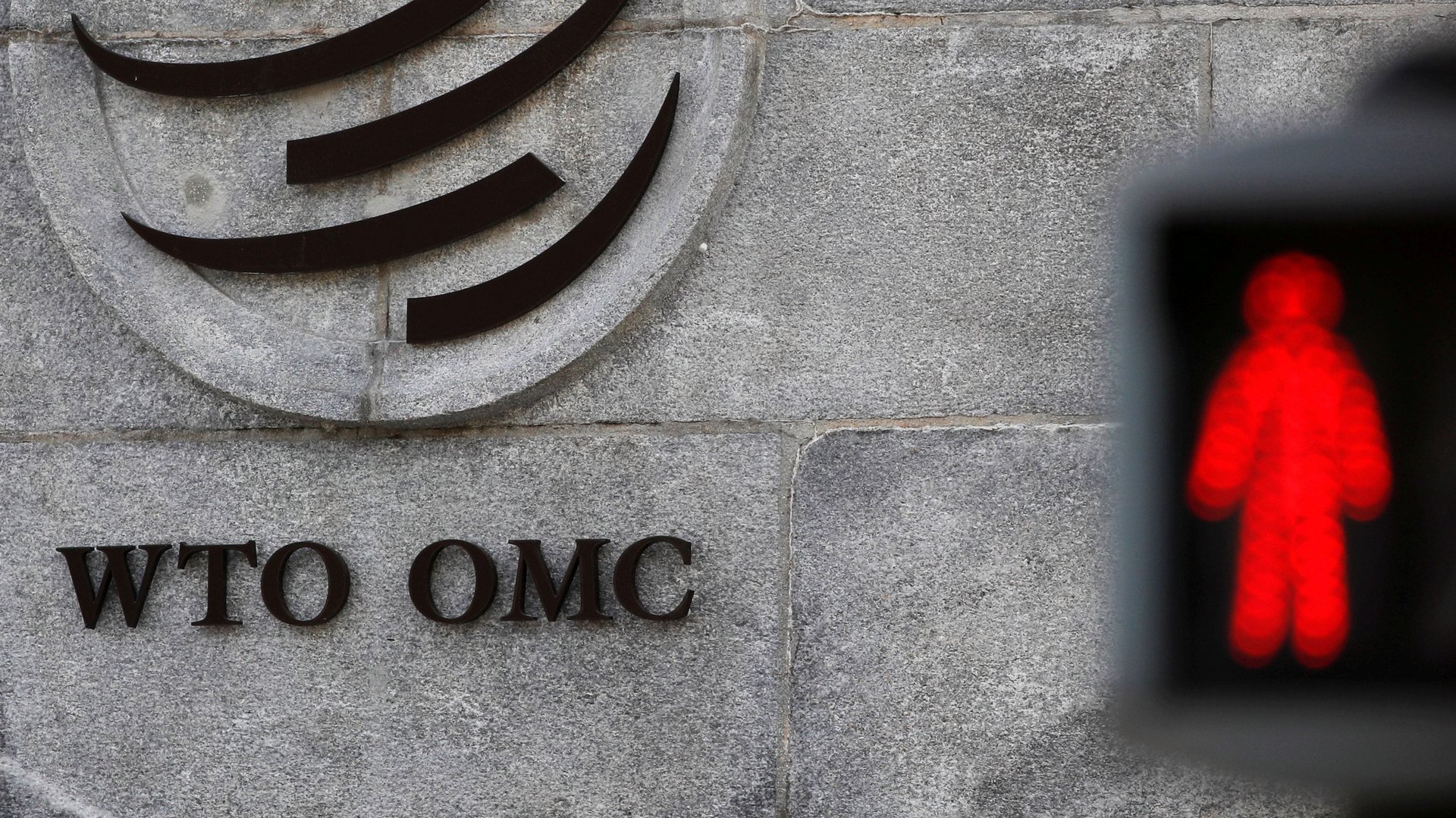The US and China weren’t invited to the meeting to reinvent the World Trade Organization
Supporters of free trade regularly point to the World Trade Organization as an antidote to Donald Trump’s protectionism. But a growing number of them are starting to admit that the WTO needs to be fixed, first.


Supporters of free trade regularly point to the World Trade Organization as an antidote to Donald Trump’s protectionism. But a growing number of them are starting to admit that the WTO needs to be fixed, first.
Trade officials from a dozen countries and the European Union are gathering in Canada today to plot how the WTO could be revamped. Notably absent from the guest list are the US, which originally spearheaded the creation of the international trading system, and China, the world’s biggest exporter. The gathering, said Canadian minister for international trade diversification Jim Carr, is only for “like-minded” trade officials.
The two-day meeting, dubbed the “Ottawa Ministerial on WTO Reform,” is an acknowledgement that little will get done using the traditional multilateral approach that governs the 23-year agency. The goal is to instead work in smaller groups that can actually agree on parts of the WTO’s hulking agenda.
“While no WTO member should be expected to take on obligations to which it did not consent, likewise no member should expect to be able to prevent others from moving forward in various configurations in areas where they are willing to make greater commitments,” according to a discussion paper circulated by Canada ahead of the meeting.
The Ottawa meeting is an experiment in that kind of downsizing.
Who’s going?
The “like-minded” WTO members that got a seat at the table in Ottawa are Australia, Brazil, Chile, the European Union, Japan, Kenya, Korea, Mexico, New Zealand, Norway, Singapore and Switzerland.
Why should the WTO downsize?
The WTO has 164 members. Under its rules, decisions are made by consensus, so that smaller countries aren’t overrun by bigger, more powerful ones. But that also means that it’s hard to make decisions, because members have very different agendas.
One major split, for example, is over how developing countries should be treated. Members have been discussing the issue since 2001, without much to show for it. The US gripes that China is still ranked as developing by the WTO, a status which gives it extra time to comply with all the rules.
The consensus requirement also hamstrings dispute settlement. The Appellate Body, which rules on trade fights, is alarmingly low on judges. It only has three because the US has refused to fill vacant posts, under the argument that the judges have overstepped their authority.
Next year, the Appellate Body could be left with just a single judge, once the terms of the other two expire. That would put the body out of commission, because three judges are needed to hear a case.
While the WTO has sputtered on despite deadlock for years, finding a fix is increasingly urgent.
What’s the plan?
The WTO needs to be more “pragmatic and realistic,” according to the Canadian discussion paper. (The words “creativity” and “flexibility” also appear in the document.)
On the dispute settlement front, for example, the idea is to encourage parties to better manage their fights, so they don’t reach the Appellate Body; this would require, as the proposal suggests “a renewed commitment to self-restraint.” Another idea is to make the dispute settlement process more simple.
More broadly, the group in Ottawa will discuss how WTO members could splinter off into smaller groups to hammer out policies on issues they agree on. One option is to create “closed agreements.” They would have to be agreed by all, but would only apply to the countries that choose to enter them.
For example, if several countries were eager to start writing rules for digital trade, they would be able to get started and commit to abide by whatever agreement they draft. Others could join later.
Will it work?
“Plurilateral initiatives,” as the more limited agreements are called, defeat the purpose of the WTO. The international institution was designed to create rules for all members.
However, the new approach could get the ball rolling in some key negotiations. And given the organization’s weakened state and the rise of trade wars, even that would be big progress.